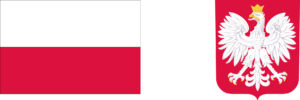The accession of Central Eastern European (CEE) countries to the European Union (EU) has had a profound impact on their military strategies, reflecting a shift in geopolitical alignments and defence priorities. The integration of these nations into the EU framework has necessitated a reevaluation and adaptation of their military strategies, influenced by the broader context of EU defence policies, NATO membership, and evolving security challenges in the region.
Prior to EU membership, many CEE countries had military strategies deeply rooted in their Cold War experiences and the security dynamics of being part of the Soviet sphere of influence or the Warsaw Pact. The dissolution of the Soviet Union and the Warsaw Pact left a security vacuum in the region, prompting these nations to seek new alliances and security frameworks. The prospect of EU membership offered not only economic and political integration but also a new security paradigm.
EU membership has brought about several key changes in the military strategies of CEE countries:
Alignment with EU and NATO Standards: Many CEE countries are also members of NATO, and their accession to the EU has further aligned their military strategies with Western standards. This alignment has involved significant restructuring and modernization of their armed forces, moving away from Soviet-era doctrines and equipment towards interoperability with NATO forces. For instance, Poland and Czechia have undertaken substantial reforms of their military structures and procurement to meet NATO standards, which are also in line with EU expectations.
Focus on Collective Defense and Multinational Cooperation: EU membership has emphasised the importance of collective defence and multinational cooperation in military strategy. CEE countries have increasingly participated in EU-led military and peacekeeping missions, such as those in the Balkans and Africa. They have also engaged in joint military exercises and collaborations within the EU framework, strengthening ties with other member states and enhancing their collective defence capabilities.
Addressing Non-Traditional Security Threats: EU membership has broadened the scope of military strategies in CEE countries to include non-traditional security threats, such as cybersecurity, terrorism, and hybrid warfare. The EU’s Common Security and Defence Policy (CSDP) encourages member states to develop capabilities to address a wide range of security challenges, beyond conventional military threats. For instance, Estonia has become a leader in cybersecurity within the EU, prompted by its experiences with cyber attacks and its commitment to digital security.
Balancing Regional and EU-wide Security Interests: CEE countries have had to balance their regional security concerns with broader EU-wide interests. For countries like Latvia and Lithuania, the security challenges posed by Russia remain a primary concern, influencing their military strategies significantly. At the same time, these countries work within the EU framework to address wider European security issues, such as migration and border security.
Defence Spending and Investment: EU membership has also impacted defence spending and investment in CEE countries. Adhering to NATO’s defence spending targets, which call for dedicating 2% of GDP to defence, has been a challenge for some of these countries. Poland is one of very few countries which consistently clears this target, and even over-shoots it. However, the security environment in Europe, particularly following the annexation of Crimea by Russia, has led to increased defence spending in the region, with a focus on modernising military capabilities.
The impact of EU membership on CEE military strategies represents a significant shift in the region’s security landscape. These countries have transitioned from Soviet-era defence doctrines to embracing the collective defence principles of the EU and NATO. This transition has involved not only military restructuring and modernization but also a broader conceptual shift in understanding and addressing security challenges in the 21st century. As the security environment in Europe continues to evolve, CEE countries will likely continue to adapt their military strategies within the EU framework, balancing their national security interests with their commitments as EU member states.






